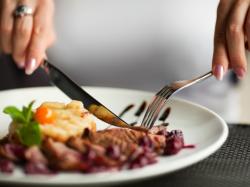Beef Flavor Research: Consumer Changes From 2005 To 2012
July 24, 2012 | 3 min to read

The beef checkoff has continuous interest in conducting research among U.S. consumers to better understand preparation methods and flavors used in beef preparation. Given the changing nature of availability of foods and preferences, the beef checkoff has been tracking these consumption patterns. Research was conducted in 2002, 2005 and again in 2012.
This year’s data shows:
• In 2012, respondents are eating the same amount of lunches and dinners at home as in 2005, yet report eating out less (which may be a function of the economy).
• There appear to be more “foodies” since 2005 (a wide variety of resources are being utilized to find new recipes; there is an increased interest in trying new foods; more respondents report they enjoy cooking; and, there are more online recipes / cooking shows).
• In 2012, respondents are eating beef at similar frequencies as in 2005. However, they’re eating more ground beef (most preferred is 80% lean/20% fat) and less deli-style beef products and steaks.
• At parity with 2005, 64 percent like to buy larger sizes of beef and freeze some for later, while 36 percent prefer to buy beef fresh to eat within a day or two.
• Beef preparation preferences varied by beef cut: The most preferred ways to enjoy various types of beef included steaks grilled outdoors, ground beef as burgers prepared on an outdoor grill, sliced or cubed beef cooked with onions, peppers or other vegetables (such as fajitas or stir fry); and, roasts prepared in the oven, on the stovetop or in a Crockpot.
• All accompanying flavors, sauces, and spices are liked at higher levels in 2012 than was true in 2005
• Overall, a variety of different ethnic foods have become more popular since 2005. American or local food and Italian food, still top the list in 2012 as most preferred.
“This kind of research really helps the checkoff do a number of things, such as understand the types of meals typically prepared and under what circumstances; and, determine general food attitudes including willingness to try new types of food,” says Dave Zino, executive chef for the beef checkoff. “It also enables us to understand how these attributes may differ by segment, including ethnicity, gender and region and how things continue to change over time.”
So what do the numbers really mean? The beef checkoff consistently uses the findings from beef flavor research to guide recipe development, aid in menu ideation for restaurants and better understand the consumer base across the United States.
“As consumer trends and attitudes about beef change, and as eating habits shift according to economic drivers, the checkoff must have a firm grasp on what consumers want and how they want it,” says Zino. “It’s the checkoff’s way of always striving to keep more beef on more menus and more dinner tables.”
For more information about your beef checkoff investment, visit MyBeefCheckoff.com.
The Beef Checkoff Program was established as part of the 1985 Farm Bill. The checkoff assesses $1 per head on the sale of live domestic and imported cattle, in addition to a comparable assessment on imported beef and beef products. States retain up to 50 cents on the dollar and forward the other 50 cents per head to the Cattlemen's Beef Promotion and Research Board, which administers the national checkoff program, subject to USDA approval.
Source: The Beef Checkoff Program
